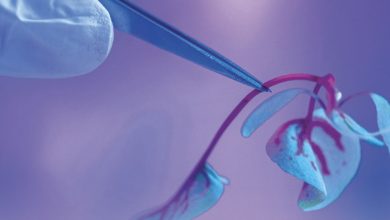HEALTHCARE SECTOR
FROM HARMFUL TO WHOLESOME
Janaka Perera pegs the must-haves for an organised community health system
Good health is a prerequisite for a nation’s economic and social progress. Despite Sri Lanka achieving a relatively high health score, it continues to experience critical problems in many areas. And this is the primary reason for the need for an improved community healthcare system especially considering the challenges faced by poor and vulnerable communities.
During the time of the island’s ancient agricultural civilisation, people lived close to nature. The native physicians on whom they depended focussed primarily on prevention rather than cure. Virtually every villager was to some extent a physician since they knew about nutritious vegetables and fruits, and the curative power of herbs and spices.
The country was basically rural with no urban areas and townships as is the case today. In such an environment, our forefathers led their lives on the premise that one is largely his or her own doctor, and that the kitchen is the best hospital while food is the best medicine.
That the right food is good medicine was known by many people in the East including India and Sri Lanka long before it was in the West.
There are numerous similarities between Ayurveda dietetics and traditional foods – so much so that many of the latter may be called ‘health foods’ as they could prevent, reverse and even cure illnesses. In contrast, today’s junk foods are slowly but surely leading to sickness and obesity.
Deshabandu Dr. Publis Silva – who is the master chef at Mount Lavinia Hotel – is in his 80s and in good health. He stresses the need for people to become accustomed to traditional healthy food such as red rice, kurakkan and green gram, instead of processed foods and wheat flour products.
King Aggabodhi VII was renowned for his medical research. According to the Chulavamsa, the king “studied the medicinal plants over the entire island of Lanka to ascertain whether they were wholesome or harmful to the sick.”
All that research and knowledge almost ended with the dawn of the modern era, which changed medicine, methods of medical treatment and maintenance of healthcare services, in parallel with socioeconomic and industrial transformation.
Consequently, Sri Lanka and the rest of the world have undergone many changes although not all of them have been beneficial to society. Changing lifestyles and industrialisation have led to aggravated problems that were unheard of in the past. One example is the increasing number of young people who are falling victim to diabetes thanks to bad dietary habits.
Over 70 percent of the nation’s population is by and large rural but many citizens (and poorer segments in urban areas) lack access to proper healthcare under the changed conditions unlike during the precolonial period.
Today, the focus is more on curative medicines rather than preventative measures. The poor and even middle income groups whose main source of healthcare facilities is the public sector are increasingly pushed to the margins especially in the provinces – and into the clutches of the private sector. These people are at the mercy of the medicinal drug mafia.
Fast food consumption and living in polluted environments among other factors have increased health risks. As a result, more financial resources will be required to meet the rising demand for easily accessible and affordable quality healthcare.
Questions have been raised about the island’s healthcare system as a whole – i.e. both the public and private sectors – although the state and businesses have been rapidly building (as well as improving) infrastructure, services and human resources. This is a result of Sri Lanka’s transformation into a middle income country, which has led to both positive and negative outcomes.
As in other developing countries, Sri Lanka faces challenges in providing healthcare services and retaining a workforce to support it in remote rural areas.
Public service midwives have been an important part of Sri Lanka’s primary healthcare system since the early 20th century. Traditionally, these healthcare workers focussed only on midwifery but have now evolved into a professional cadre. They also play a vital role in family health especially in rural settings.
State backed community health worker (CHW) programmes have been introduced in a number of countries as part of their primary healthcare policies. Although CHWs are salaried or receive an honorarium under many of these programmes, they also work as unpaid volunteers in several such endeavours.
A better organised community healthcare system can play a critical role in developing a sustainable healthcare service by educating the public (from school level onwards) on wholesome diets and proper living, civic consciousness, social responsibilities that are vital to communal wellbeing and training in primary healthcare, as well as the enforcement of tighter regulations covering fast food advertising targeted at children.








This is a well-rounded article. I agree that the changes have not been beneficial.
Agree.
You are what you eat. It’s the same with your health. Sri Lankan food habits have been lost between the many revolutions and evolution that the country underwent. We especially have doubts on how food consumption is to be adapted in today’s lifestyle.
Transforming with the winds of change – from an agriculture based lifestyle in self-sufficient villages to an industrialised one in urban and suburban areas – food became a commodity in a market driven and time constrained age, and therefore, less concern was paid to it.
In the meantime, people could not choose the right type and patterns for healthy local food. A good example is that the amount of rice we consume today is excessive as it is fit for a person in the agricultural era. Thus, this gives rise to many health disorders.
Since people’s priorities too have changed with consumerism, the right food is not popular. Fuelling this are the food types from the West that dominated powerfully until the country realised the ill effects.
Quick and fast food consumption habits are spreading. Currently, the country has no policy for advertising food. The energy drinks that are banned in many countries are making a bold appearance in the shelves of supermarkets. It’s not just a watchdog in need. This is where the truly knowledgeable and committed volunteers and strategists can set a health system in good shape. Food for thought!
In ancient times, people were blessed with simple and meaningful lives in harmony with nature. They were self-taught and knowledge was something that had no limit unlike in the present day, where we tend to refer to a book or the internet with our short attention spans among many other things. In a commercialized world with unlimited wants, people lead sedentary lifestyles and have no way of being self-sufficient with regards to their own healthy food. It is not a matter of concern either.
On average, people spend about 9 hours at work and about 4 hours commuting which take up the best productive hours. Too exhausted at the end of it, the only option left is to resort to tasty, tempting and convenient food. This has become more of a norm than a trend. It is therefore essential that traditional, healthy food and grains are produced for consumption so that conventional food can be consumed in its goodness in this contemporary era.